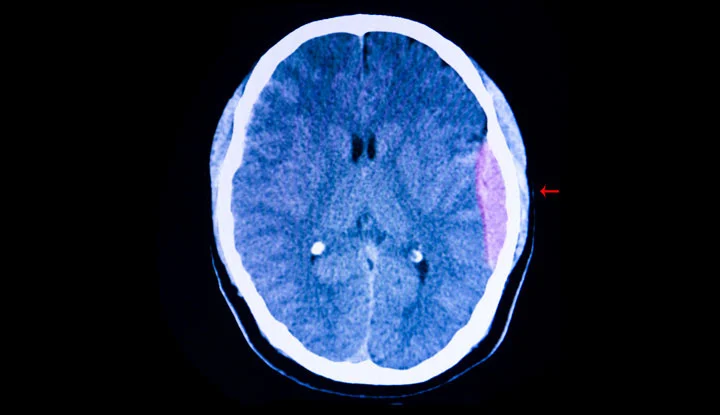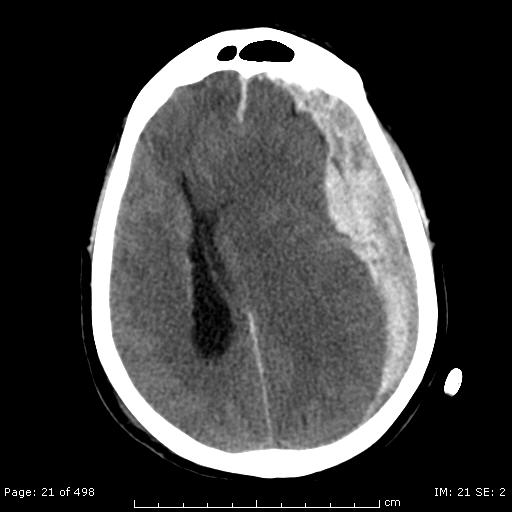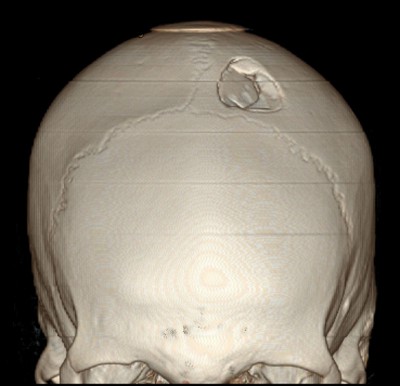EDH / SDH / Depressed Fracture
Epidural Hematoma (EDH)
An epidural hematoma (EDH) is a collection of blood between your skull and the dura mater, the thick membrane that covers your brain.
An extradural haematoma most commonly occurs after a fractured skull caused by a head injury. Typically, an extradural haematoma is caused by a severe head injury – for example, in a road traffic accident.The blood usually collects in the epidural space soon after a head injury and symptoms are usually noticed quickly. Occasionally, bleeding can occur more slowly and there are only minor symptoms (and so not noticed) until some days after a head injury.

A CT scan of the head is good at detecting an intracranial extradural haematoma. A small intracranial extradural haematoma that is not producing any symptoms (or the symptoms are not severe) can sometimes be treated just by careful monitoring and observation. The blood clot may clear (re-absorb) by itself.
However, surgery is generally needed to treat a large intracranial extradural haematoma. This involves removal of the haematoma. Most commonly, surgery called a craniotomy.
Subdural Hematoma (SDH)
A subdural hematoma is a collection of blood that accumulates inside the skull but outside the brain. The bleeding occurs within the layers of tissue that surround the brain. It collects under the brain’s tough outer wrapper known as the dura. The blood is then described as being sub (under) -dural.
Since the skull does not expand, any buildup of blood inside it can quickly put pressure on the brain. In cases where a large amount of subdural blood accumulates, the pressure inside the head can lead to brain damage, unconsciousness, and death

What are the causes of SDH?
SDH’s are most often caused by sudden impacts shaking the skull. Sudden shifting of the brain within the skull (rattling around like a tennis ball in a can) can tear the small blood vessels that bridge between the skull and brain. Depending on the size and location of the torn vessels, this can produce brisk bleeding with a rapid patient collapse or much slower oozing with symptoms appearing many days after the event. The events do not have to be direct blows to the head. About half of the chronic SDH patients who report having fallen did so without hitting their heads. While rare, SDH’s can also appear without trauma. Abnormal blood vessels, dehydration, cancer, and blood clotting disorders have caused spontaneous SDH’s. Blood clotting medications, anabolic steroids used in body building, or cocaine use might also be factors.
Skull Fractures
A skull fracture is any break in the cranial bone, also known as the skull. There are many types of skull fractures, but only one major cause: an impact or a blow to the head that’s strong enough to break the bone. An injury to the brain can also accompany the fracture, but that’s not always the case.
A fracture isn’t always easy to see. However, symptoms that can indicate a fracture include:
- swelling and tenderness around the area of impact
- facial bruising
- bleeding from the nostrils or ears
Treatment depends on the severity of the fracture. Pain medication may be the only treatment necessary in mild fractures, while neurosurgery may be required for more serious injuries.

Causes of skull fractures
A skull fracture occurs when a force that’s strong enough to break the bone hits the skull. Any type of impact to the head can cause a skull fracture. This includes:
- being hit with an object such as a baseball bat, hammer, or rock
- falling and hitting the ground
- injuring the head in a vehicle accident
- injuring the head in a motorcycle accident
- being struck by a vehicle or train as a pedestrian or cyclist
- being physically assaulted or abused
- sustaining a sports injury
Looking for Neuro
Surgeon?
Simply give us a call and book an appointment for yourself. We are here to help. Walk into our Hospital and let us take a closer look to suggest the best treatment you need.
